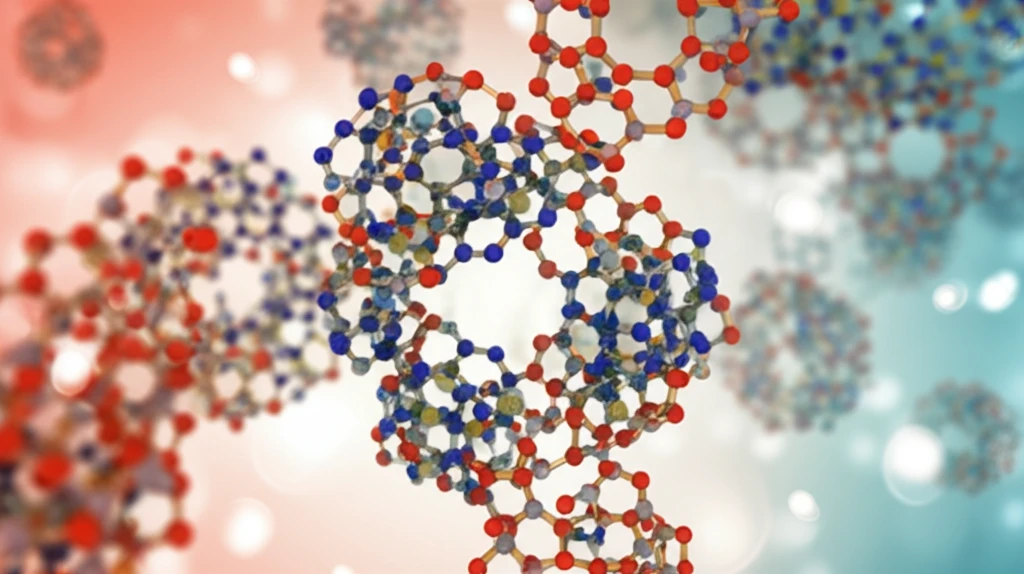
Unlock the Secrets of Diazaphenanthrenes: A Revolutionary Synthesis Approach
"Dive into the innovative world of organic chemistry with our exploration of a novel method for synthesizing 9,10-substituted 3,4,10,10a-tetrahydro-2H,9H-1-oxa-4a,9-diazaphenanthrenes, potentially unlocking new avenues in drug discovery and materials science."
In the realm of organic chemistry, the synthesis of complex molecules is a continuous quest. Molecules with fused rings and multiple functionalities often hold the key to groundbreaking advancements in medicine and material science. Among these, diazaphenanthrenes—compounds featuring a unique arrangement of nitrogen-containing rings—have garnered significant attention due to their potential applications.
Diazaphenanthrenes are not merely theoretical curiosities; they exhibit a range of biological activities that make them attractive candidates for drug development. Modified quinoxaline derivatives, which share structural similarities with diazaphenanthrenes, have been explored for their antidepressant, anticancer, antidiabetic, anti-inflammatory, antimicrobial, and antiviral properties. These diverse therapeutic applications underscore the importance of developing efficient methods to synthesize these compounds.
This article delves into a pioneering approach to synthesizing 9,10-substituted 3,4,10,10a-tetrahydro-2H,9H-1-oxa-4a,9-diazaphenanthrenes through a reductive cyclization method. We'll break down the complex chemistry, explain the step-by-step processes, and highlight the potential impact of this innovative technique on pharmaceutical and materials research. Whether you're a seasoned chemist or simply intrigued by the building blocks of our world, prepare to unlock the secrets of diazaphenanthrene synthesis.
The Reductive Cyclization Method: A Step-by-Step Synthesis

The synthesis of 9,10-substituted 3,4,10,10a-tetrahydro-2H,9H-1-oxa-4a,9-diazaphenanthrenes involves a multi-step process, starting with readily available o-phenylenediamine (1). This initial compound serves as the foundation upon which the complex diazaphenanthrene structure is built.
- Sequence 1: Involves the reaction of compound 3 with ethyl 3-bromopropionate, followed by reductive cyclization using LiAlH4 to obtain the 9-benzyl-10-phenyl-substituted diazaphenanthrene (5).
- Sequence 2: Starts with treating compound 2 with benzyl chloroformate, followed by reaction with ethyl 3-bromopropionate and subsequent reductive cyclization using LiAlH4 to yield the 10-phenyl-substituted diazaphenanthrene-9-carboxylic acid benzyl ester (8).
- Sequence 3: Begins with the treatment of compound 2 with p-toluene sulfonic acid, followed by reaction with ethyl 3-bromopropionate and reductive cyclization using LiAlH4 to produce the 10-phenyl-substituted diazaphenanthrene (11).
The Promise of Diazaphenanthrenes: Future Directions
The development of this reductive cyclization method represents a significant step forward in the synthesis of diazaphenanthrenes. Its potential impact extends far beyond the laboratory, with implications for drug discovery, materials science, and various other fields. As researchers continue to explore the properties and applications of these fascinating molecules, we can anticipate further breakthroughs that leverage the power of organic synthesis to address some of the world's most pressing challenges. This innovative approach not only expands our chemical toolkit but also opens new avenues for creating advanced materials and life-saving drugs.
